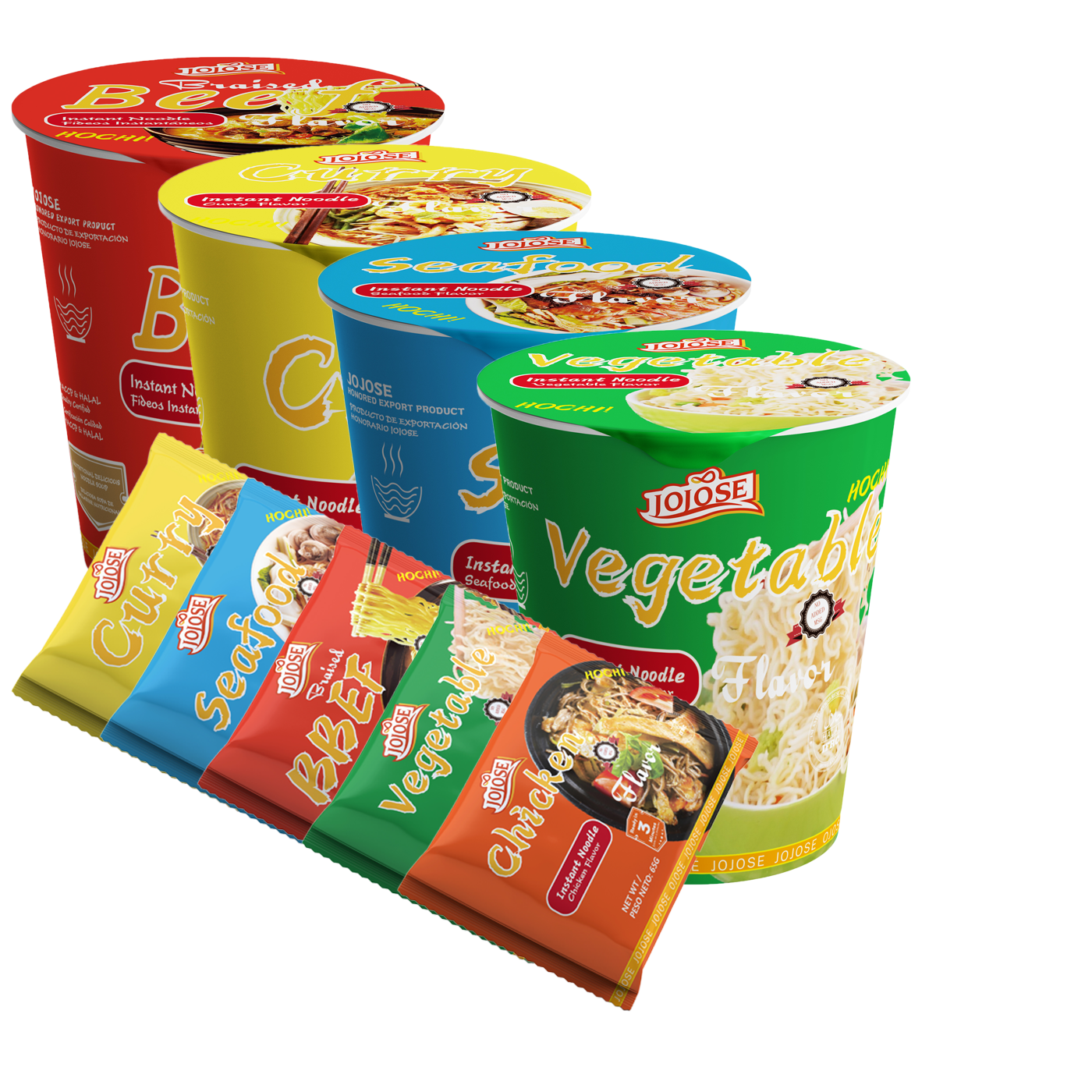Noodles are truly a culinary delight. Born out of mixing flour and water, adapted in varied shapes, sizes, thicknesses, and uses of ingredients, propagated by industrialization and globalization, and becoming a staple in various cuisines for centuries, noodles have a fascinating history with cultural influences and amazing recipes. Relished as feijoada in Brazil, spätzle in Germany, ramen, soba, and udon in Japan, however, the two paramount nations that are considered synonymous with noodles are China and Italy.
Particularly talking about Chinese noodles in this blog, Chinese noodles have been captivating palates around the world for centuries. It’s no surprise that they come in a variety of styles, each with its own unique flavor, texture, and culinary history.
While there are countless ways to enjoy Chinese noodles, one convenient and popular option is through cup noodles. These pre-packaged, easy-to-make dishes are a quick and delicious way to savor the diverse world of Chinese noodles.
In this blog, JOJOSE FOODS, the leading noodle manufacturer and supplier explores eight types of Chinese noodle styles that you can find in the best cup noodles, providing you with a culinary tour of China’s rich noodle heritage.
A brief history of noodles
Noodles are believed to have originated in China. The oldest evidence of noodles being invented is from China around 4,000 years ago. Records show the history dates back to the Eastern Han Dynasty around the 3rd century BC–3rd century AD. In 2005, an earthware bowl that contains 4000-year-old noodles was found at the Lajia archaeological site by a team of archeologists.
Today, we know that noodles have become an integral part of Chinese cuisine as they are inexpensive, less time-consuming, fulfilling, and can be made with various recipes. Chinese noodles have evolved, industrialized, and developed over the years, and other countries have also adopted them in their cuisine. Many potato chip manufacturers and other food producers have drawn inspiration from the rich and diverse world of noodles to create unique and enticing snack products that capture the essence of these beloved strands of goodness.
Different types of Chinese noodles
- Yunnan Rice Noodles
Yunnan rice noodles, known as “crossing the bridge noodles,” are a specialty of Yunnan province. Though rice noodles come in a variety of shapes, the most commonly used ones are spaghetti-like noodles, which are called Yunnan rice noodles, or mi xian.
It is a ubiquitous dish among the locals, no matter whether it is for breakfast, lunch, or dinner. This dish is a masterpiece of culinary art, featuring a fragrant and hearty broth, thinly sliced meat, and a variety of fresh and pickled vegetables, all served over a bed of rice noodles. The noodles can also be mixed into cold salads or stir-fry with eggs, tomatoes, meat, spring onions, and chili. They are a must-try for first-time visitors to Yunnan.
- Sesame noodles
Sesame noodles, or ma jiang mian in Chinese, are a quick noodle dish that can be made in under 10 minutes. If we consider spicy sesame noodles, they are the most popular Chinese street food. Sesame noodles can be traced back to both Taiwan and China.
Sesame noodles are typically eaten cold during the summer but can be served warm with protein and veggies. Spicy sesame noodles feature a bold sesame sauce mixed with chili oil, garlic, and soy sauce, creating a savory, spicy, and nutty flavor profile.
There also comes a cup version of sesame noodles, including dehydrated sesame sauce, noodles, and seasoning. These noodles provide a quick and tasty way to enjoy the zesty taste of spicy sesame noodles.
- Lanzhou Beef Noodles
Lanzhou beef noodles, also known as Lanzhou hand-pulled noodles, originate from the city of Lanzhou in Gansu province. They consist of flavorful, clear broth, shaved beef, tender Chinese radish slices, and lots of cilantro and scallion. They are made using deep red chili oil, chewy handmade noodles, and Lanzhou beef noodle soup. They are renowned for their simplicity.
When you’re craving the authentic flavors of Lanzhou beef noodles on the go, there are cup noodles available that capture the essence of this classic dish. They typically contain dehydrated beef slices, vegetables, and a savory broth base.
- Chowmein
Chow mein is a popular and widely recognized Chinese dish, both in China and around the world. It is characterized as a stir-fired noodle dish and is a staple at Chinese takeout restaurants. They originated in Guandong, China, and are made with wheat flour, eggs, and water.
The key to making great chow mein is in the stir-frying technique. Irrespective of whether they are freshly made or dried, Chowmein must be cooked in boiling water, rinsed, and then drained before stir-frying. stir-fried with high heat and a combination of oil and sauce. imparts a delicious smoky wok hei flavor, making the dish aromatic and flavourful.
The origin and variations of Chowmein are:
Cantonese Chow Mein: It is usually a drier dish, with the noodles retaining a slightly crispy texture. It typically features stir-fried thin egg noodles with a variety of ingredients like meat (often chicken, beef, or shrimp), vegetables, and a savory sauce.
Shanghai Chow Mein: Shanghai chow mein is characterized by the use of thick, round wheat noodles. It is usually stir-fried with a darker soy-based sauce and a mixture of ingredients like pork, mushrooms, and bok choy.
Northern Chow Mein: It often features hand-pulled wheat noodles that are stir-fried with a variety of ingredients, including lean meats, soybean paste, and an array of vegetables. The result is a heartier, more substantial dish.
- Oil Noodles
Oil noodles, or Mian, are tubular yellow strands served at street carts in Hong Kong. They are often sold at specialty Asian markets, are relatively thick and bouncy, and go best with dry sauce. Egg whites or whole eggs are added as binding agents, along with corn oil and a preservative ingredient called sodium benzonatate, to maintain the freshness of the noodles. When manufacturing instant noodles, the process involves creating these noodles and then dehydrating them for packaging and later consumption.
Oil noodles are typically boiled for approximately 15 minutes, and once cooked, you can transfer the noodles to a bowl with oil and seasonings. After it, add your choice of cooked meat, broth, or vegetables. The noodles can be served either hot or cold, depending on the mood.
Conclusion
In the vast world of Chinese noodles, there’s a style to suit every palate and preference. Whether you’re savoring Yunnan Rice Noodles with their delightful mix of flavors, indulging in the nutty and spicy goodness of Sesame Noodles, relishing the simplicity of Lanzhou Beef Noodles, or enjoying the classic stir-fried goodness of Chow Mein, the diversity of Chinese noodle styles is a culinary treasure. With convenient cup noodle versions, you can embark on a delectable journey through China’s rich noodle heritage right from your own kitchen.




